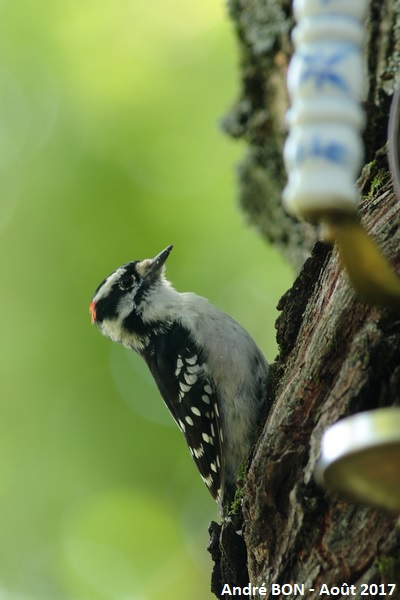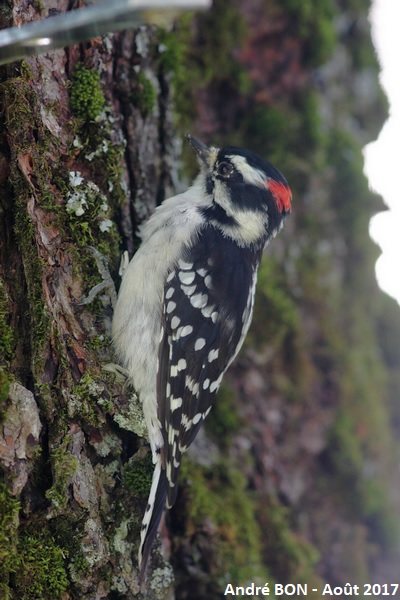

| Downy Woodpecker (Dryobates pubescens (Linnaeus, 1766)) |


|
|
Scientific name: Dryobates pubescens (Linnaeus, 1766) Common name: Downy Woodpecker Other names: Old scientific name: Picoides pubescens. French name: Pic mineur Order: Piciformes Family: Picidae Size: Body size: 14 to 18 cm; Weight: 20 to 33 g; Wingspan: 25 to 31 cm. Habitat: Deciduous forests and cultivated areas. Food: Mainly insects caught on or under the bark of trees, even deeper for males with a slightly more powerful beak, but also seeds and berries. Nesting: Downy Woodpeckers dig cavities in dead trunks or dead branches, at a height between 3.5 and 9 meters. Females lay 4-8 eggs in April-May in the south of the range and until July in the very north. Migration: Mainly sedentary. The more northern birds may move southwards in winter, and mountain birds may move downwards into the valleys. Geographic area: North America, the United States and Canada except desert areas and northern tundra. |
The Downy Woodpecker is the smallest woodpecker in North America. It is mostly black on the upperparts and wings, with a white back, throat and belly, and white wing patches. There is a white bar above the eye and another one below. The top of the head is black with a red spot on the nape of males. This red spot is missing on females. Juveniles have a red cap. The beak is black, thick and short. It is smaller than on other woodpeckers. There is a possible confusion with the Hairy Woodpecker (Leuconotopicus villosus). You can recognize this last one its slightly larger size but above all by its long beak, of length roughly equal to the width of the head. Downy Woodpecker's beak is much shorter. |
| [To know more about the Downy Woodpecker] [Next picture] [Top] |

|
The guest house for our first stop in Mauricie was superbly fitted out and had a nice bird-feeder in the garden. It was mainly the Downy Woodpecker that came there that day. The small size and the short black beak are typical. The red spot on the nape indicates a male. |
| [To know more about the Downy Woodpecker] [Previous picture] [Top] |

|
The strong backlight made shooting quite difficult. It was necessary to orient, as far as possible, so that the trunk covers the greater part of the picture. |